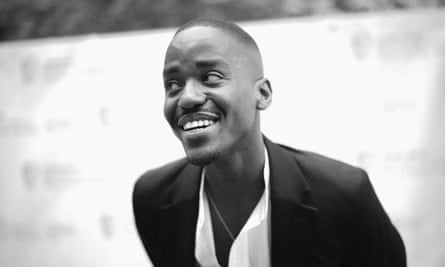In 2018, a blond-haired, two-hearted woman crashed through the roof of a Sheffield train and on to our screens, propelling Doctor Who into a new era. Reinvention has been key to the success of the show, which first aired almost 60 years ago. Despite being long overdue, having a woman in the role was not a radical idea – it had been considered multiple times.
Tom Baker thought a woman could take over from him after his tenure as the Time Lord ended in 1981. The show’s creator, Sydney Newman, suggested in the 80s that, if the show were to continue, the Doctor should change gender. Joanna Lumley even portrayed a female incarnation of the Doctor in a 1999 Comic Relief sketch. But it took more than 50 years before the famous character was finally played by a woman full-time. This week, Jodie Whittaker will regenerate, leaving 31 episodes and a new generation of Who fans in her wake, and the sonic screwdriver will pass to Ncuti Gatwa, the first full-time black Doctor.
After 12 male actors, it was a huge deal when Whittaker became the Doctor. There was, inevitably, a backlash. Change can be scary for those who are used to seeing something that has always embodied their own lives. But the negativity doesn’t compare with the positives that have come from diversification.
“As much as I have loved Doctor Who my whole life,” says the writer Juno Dawson, “there was a subliminal message running across the first 50 years: men are the central character and women are the ‘assistant’, ‘companion’. As such, having a woman as the Doctor was a huge cultural moment. Little girls can see that women are heroic, they’re important, and they’re fearless. Women’s stories must get the same capital as those about men.”
Dawson went on to write for the 13th Doctor in Doctor Who: Redacted, a female-led spin-off series featuring trans and queer characters. “When I wrote for the 13th Doctor, I never once considered her gender. Fundamentally, she is everything her predecessors were and that’s what makes her such a bold character,” she says.
Evidence suggests that casting people from diverse backgrounds can improve our mental health. According to the psychologist Dr Sophie Mort, whose work focuses on how our society shapes mental health, not seeing yourself represented on-screen affects how you think about yourself and your aspirations. “We learn about our identity, and how that identity is seen in the world, partly through the way people who share our identities are portrayed in the media. Historically, representation of women, black people, people of colour, LGBTQ+ people and people with disabilities has been less prolific, and people have often found themselves in stereotyped, supporting roles.”
So what does it mean when shows such as Doctor Who increase diversity in front of and behind the camera? Mort says increased on-screen diversity will improve the self-esteem of those represented, and having behind-the-camera talent from communities being portrayed on-screen will ensure the authenticity of these narratives. “This way, diverse narratives can be told, not just stereotyped,” says Mort.
It is not just Whittaker’s casting that marked big changes for the show. Mandip Gill became the Doctor’s first full-time Asian companion, whose character Yaz was revealed to be in love with the Doctor during this year’s New Year special, Eve of the Daleks – the first queer relationship between the Doctor and a companion. This resonated with fans all over the world. Helena Emmanuel, a Doctor Who fan based in the US, says: “When Yaz described that she hadn’t admitted her feelings towards the Doctor even to herself, it resonated with me. I had that exact moment with myself when I was first coming out, not too far from Yaz’s age, and hadn’t ever seen a coming out on TV that felt so similar to my own.”
In 2020, Sacha Dhawan became the first British South Asian incarnation of the Doctor’s long-time enemy, the Master. That year also saw the introduction of the “Fugitive” Doctor, a secret regeneration from the Doctor’s past played by Jo Martin, the first black woman to take on the role of the Time Lord.

In 2018, for the first time in 35 years, Doctor Who featured an episode, The Witchfinders, written and directed by women, Joy Wilkinson and Sallie Aprahamian respectively. Until that point, this had only happened once in the show’s history, in 1983. Over the course of the 13th Doctor’s era, just over half the show’s writers and directors have been women. This has meant we have seen incredible moments showing how the male and female incarnations of the Doctor are treated, with the Doctor now on the receiving end of sexism across space and time. She is the centre of each victory, rather than supporting from the sidelines.
Whittaker’s debut series also marked the first time the show had black or Asian writers. Malorie Blackman tackled the story of Rosa Parks, and Vinay Patel penned an episode about the partition of India. Mark Tonderai became Doctor Who’s first black director. Recent outings have introduced audiences to the lesser told stories of the real-life figures Mary Seacole and Noor Inayat Khan.
The journalist David Chipakupaku feels proud of Doctor Who for finally taking steps to tell diverse stories. “It shocked me when I realised that Doctor Who had never hired a non-white writer until Malorie Blackman. Even then, I had worries that there would be an attempt to sanitise Rosa Parks’ story. But when, less than five minutes in, companion Ryan (who is a young black man) was assaulted for daring to speak to a white woman, I knew nothing was off the table.”

